Student Blog: How Did I Get Here?
My Journey with David Byrne's American Utopia
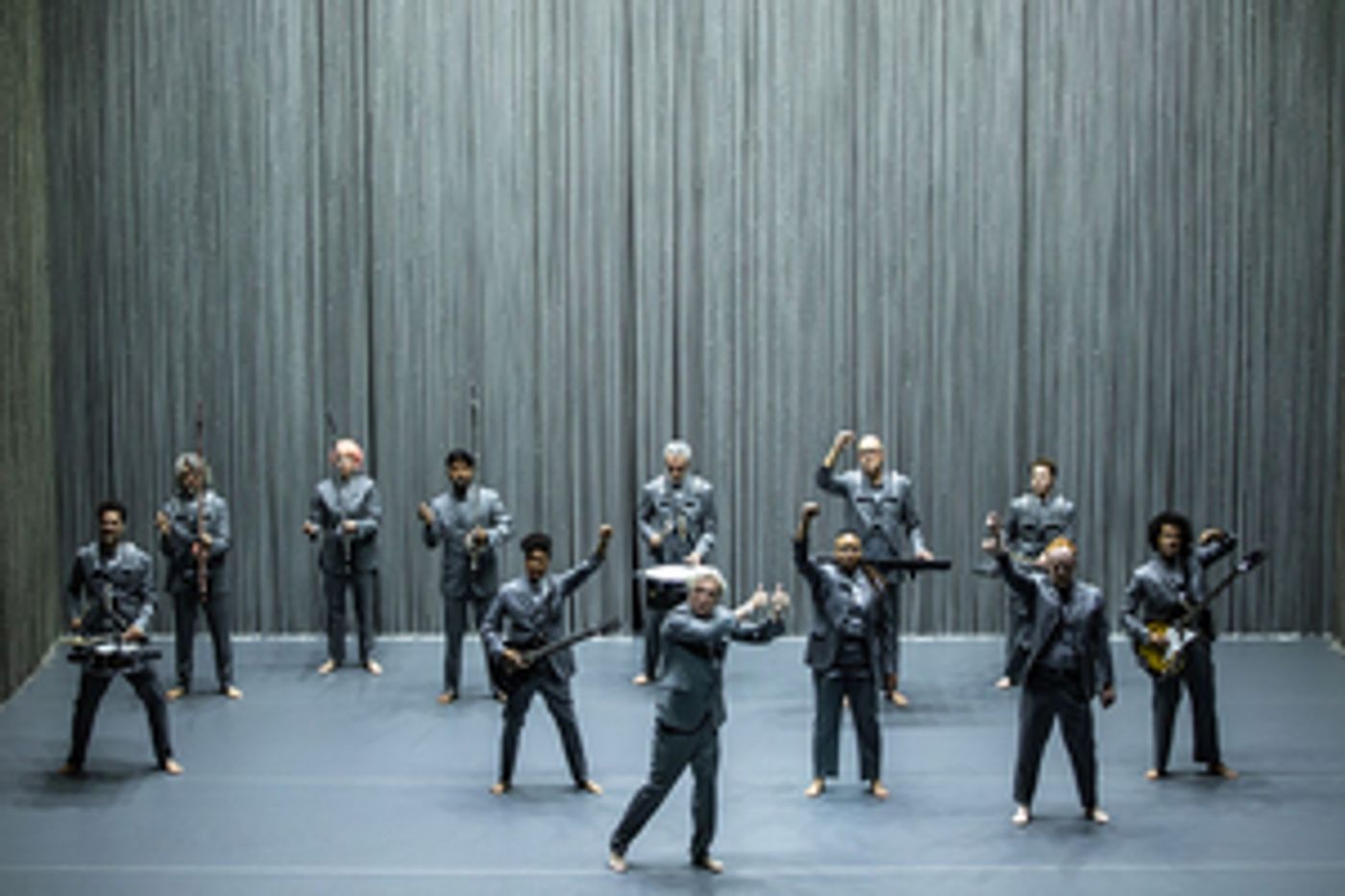
If you had told me last year that I would be seeing David Byrne's American Utopia for the sixth time this past week, I never would have believed you. It all started in November of 2021 when one of my friends was visiting New York City for the first time. Being the theatre fan I am, I insisted that we saw a Broadway show together. He suggested a show called David Byrne's American Utopia. "Sounds good to me," I responded, "but quick question - Who's David Byrne?" It's true. I had no idea who David Byrne was, let alone what this American Utopia show was about. But I trusted my friend's opinion, so we got tickets for a Wednesday night performance.
The Power of the Preshow
As soon as I stepped into the St. James Theatre, I knew that this was going to be a different performance than I had ever seen. Inside of the lobby, volunteers were encouraging audience members to register to vote, starting conversations with people who were waiting to purchase their drinks. These were people working with Headcount, a group dedicated to getting people "registered to vote and interested in democracy."
Once inside the theatre itself, I was struck by the beautiful front curtain, which was made up of dozens of different illustrations. Inside the Playbill was a short biography of the illustrator, Maira Kalman. Some were figures, including dancers dressed in grey suits, people making a variety of arm movements, and others simply posing as if they were standing for a portrait. There are different locations listed, ranging from "Cream Can Junction, ID" to "Lizard Lick, NC." Other drawings include trees, buildings, and animals, all scattered across the large white canvas. My particular favorite drawing is a small white dog with a birthday hat on its head, a tiny part of the large curtain that immediately caught my eye and made me smile.
Along with the lovely curtain illustrations, there was also an interesting noise playing throughout the theatre. Instead of music, like some shows like Six have as a form of "preshow" before the curtain rises, American Utopia had birds chirping. The noises made me feel like I was in another world, one that existed beyond the confines of the theatre's walls and the chaos of New York City.
When looking through the Playbill, as every curious theatre-goer does while waiting for the lights to go down, I noticed a QR code that led to Reasons to Be Cheerful, a storytelling project that had been created by David Byrne as a "tonic for tumultuous times." Like the chirping birds, looking at the website gave me a sense of calm that I had never experienced inside a theatre. Normally, I'm buzzing with excitement, looking forward to the show I'm about to see. But at American Utopia, I felt a sense of peace, a time when I was living in the moment and simply enjoying being with my friend.
"Here" - An Introduction to David Byrne
Many of the people who were seeing this show were, like my friend, fans of David Byrne and the band he was a part of, Talking Heads. After searching the band up (as my friend insisted I do before we saw the show) I was able to recognize a few of their most popular songs, so I wasn't completely out of the loop. Before going to the St. James Theatre I was familiar with the classics like "Burning Down the House" and "Once In A Lifetime," which my friend declared would be enough to understand the show.

Adaptation has always been a concept that has fascinated me, especially in the world of theatre. David Byrne was mostly known for his music, but he is also known for his key role in Stop Making Sense, Talking Head's 1984 concert film. Byrne was responsible for most of the stage design and choreography, as well as for the iconic oversized suit he wore while performing. American Utopia was similar to Stop Making Sense in that it would be recorded and made into a film, directed by Spike Lee and uploaded to HBO. But unlike its predecessor, American Utopia would be toured around the world and on Broadway, being performed to thousands of people at hundreds of different venues. The American Utopia we know today premiered on Broadway at the Hudson Theatre in 2019 and closed in 2020 with the intention to return later in the same year, but due to the pandemic, the show would reopen at the St. James in 2021.
Annie-B Parson - Choreographing a Concert
Even though I had taken dance classes for a few years during high school and had enough experience to be dancing on pointe, I still consider myself to be more of a "mover" than a full-on "dancer," able to follow the rhythm but struggling with complicated jumps and turns. But even as a mover, I have always been in awe of those who are able to create dances out of nothing, choreographing and creating new worlds with their minds and bodies. Annie-B Parson's choreography in American Utopia was no exception to this.
As Parson has previously stated, American Utopia is a "non-narrative piece." The show is made up of songs from Byrne's American Utopia album from 2018 with some monologues in between songs performed by Byrne. It feels like a conversation, a story being told without a main plot, carried by emotion and music. When most people imagine a concert, not a musical, on stage, they will most likely imagine something like Bruce Springsteen's Springsteen on Broadway, an acoustic performance where the singer simply presented his story through monologues and songs (ironically performed in the St. James as well). To this extent, American Utopia cannot simply be considered a "concert." It is a true performance, one with extensive choreography that amazes audiences.
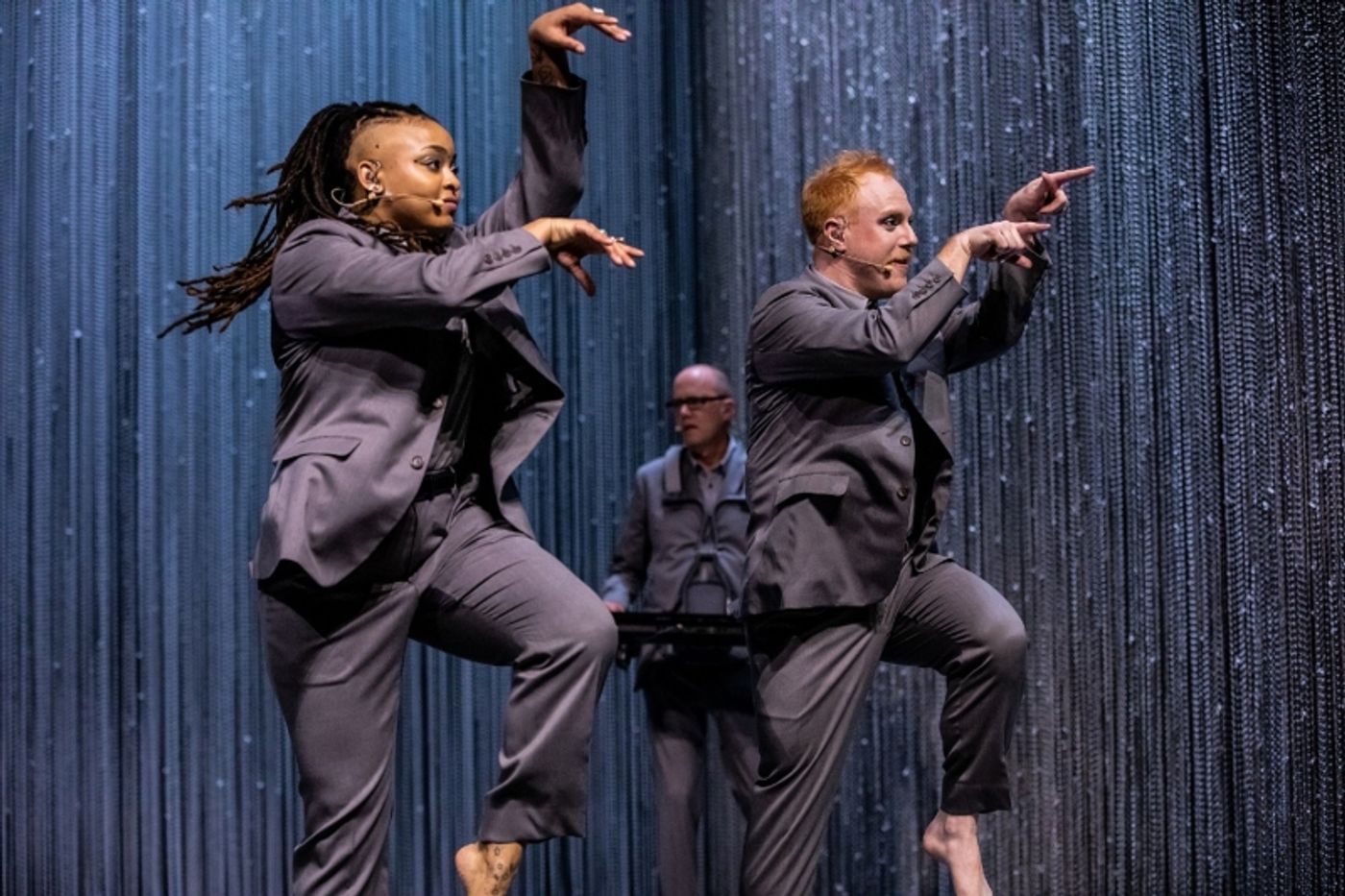
Along with Annie-B Parson, Chris Giarmo, one of the vocalists and dancers, also takes on the roles of "Dance and Vocal Captain" as well as contributing some "Additional Choreography." The dances, like the show itself, are not necessarily full dance solos like one would expect from Broadway shows, but Parson and Giarmo's choreography fits perfectly into the performance. Simple hand and leg movements become powerful statements that match with themes of the show, coming back each time Byrne mentions them in song or in a monologue. My particular favorite movement from the show is one in which Byrne places his arm at a 90 degree angle and uses his other hand to make chopping movements down his arm, representing the questions he has about the world. Dancers on stage, including Giarmo, Tendayi Kuumba, amd Renée Albulario do the most choreography on stage, but the musicians also dance as well, using their instruments as an extension of their body, welcoming it into their movements while performing. I particularly admired Jacquelene Acevedo, who performed as both a percussionist and a dancer throughout the show.
Lighting Up a Stage and "Burning Down the House" - Rob Sinclair's Lighting Design
While I attempt to be observant of all aspects of the theatre world, I have to admit that I rarely pay full attention to the lighting of shows, especially musicals. But Rob Sinclair's lighting design is essential to American Utopia, forcing you to pay attention to even the smallest details in lighting throughout the show. Sinclair uses simple shapes for the spotlights that bring your focus to different performers, with the unique choice of squares for "Don't Worry About the Government."
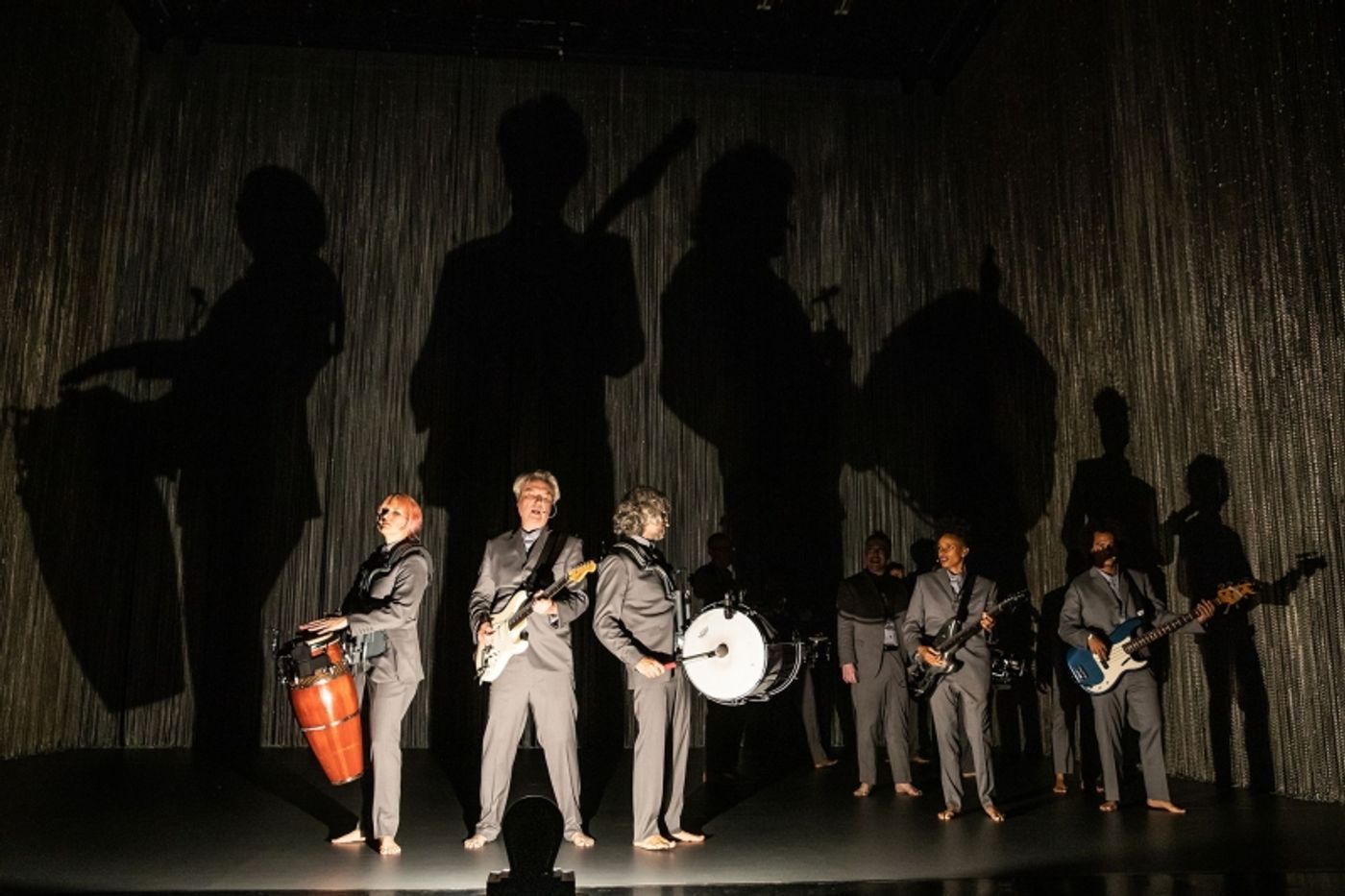
One of the most powerful lighting choices in the show is in "Blind," where a single spotlight is rolled out onto the stage and shines on the performers, projecting huge versions of their shadows on the chain curtain behind them. I found myself entranced by the shadows as if new performers had appeared on the stage, separate from the flesh and blood performers.
The Music
And now onto the part of the show that makes the show what it is - The music. David Byrne's music, to be exact. I'll keep it short - American Utopia has some of the best music on Broadway. The show has one of the few cast recordings that I play over and over again on Spotify. I listen at work, on the subway, walking around town, and even on my way to see the show! If I had to pick a favorite song from American Utopia, it would be "Toe Jam," which has become an unexpected favorite in the past few months. I love that each performer gets their own little solo in the song, showing off their individual abilities while still being connected as a member of the group.
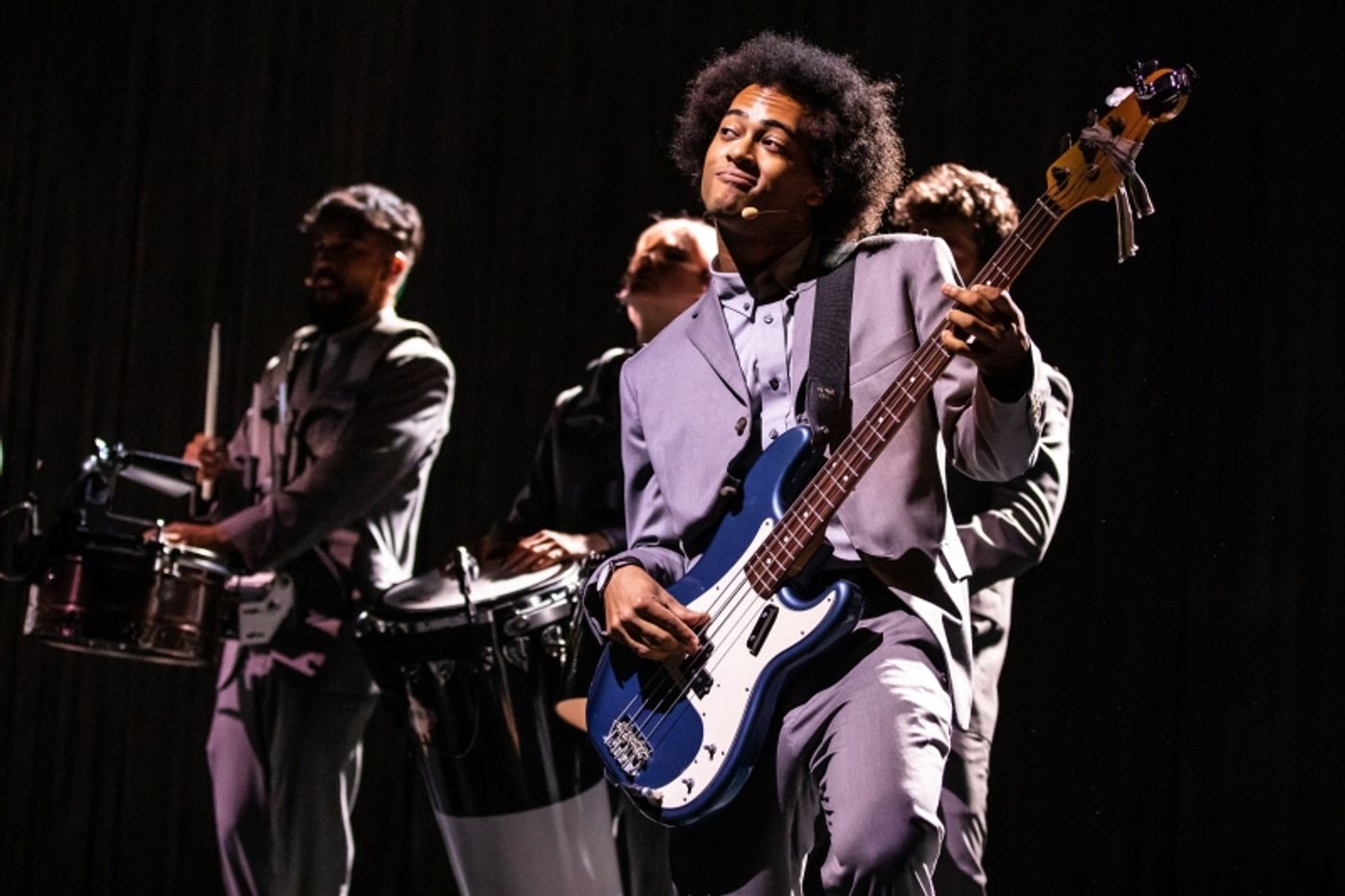
One of the most unique aspects of American Utopia's music is how the sound design, directed by Pete Keppler. In order for the performers to be able to freely move around the stage, their instruments had to be mic'd up and able to keep up with the performer's movements. The instruments were taken apart and microphones were carefully placed inside, getting rid of the requirement for wires on stage. And while many may think that the music for the performance is recorded, Byrne and the performers prove them wrong in a fascinating way, with Byrne introducing each musicians and slowly building the song with individual instruments being added at each introduction.
"We Form a Deconstructed Drumset" - The Percussion of American Utopia
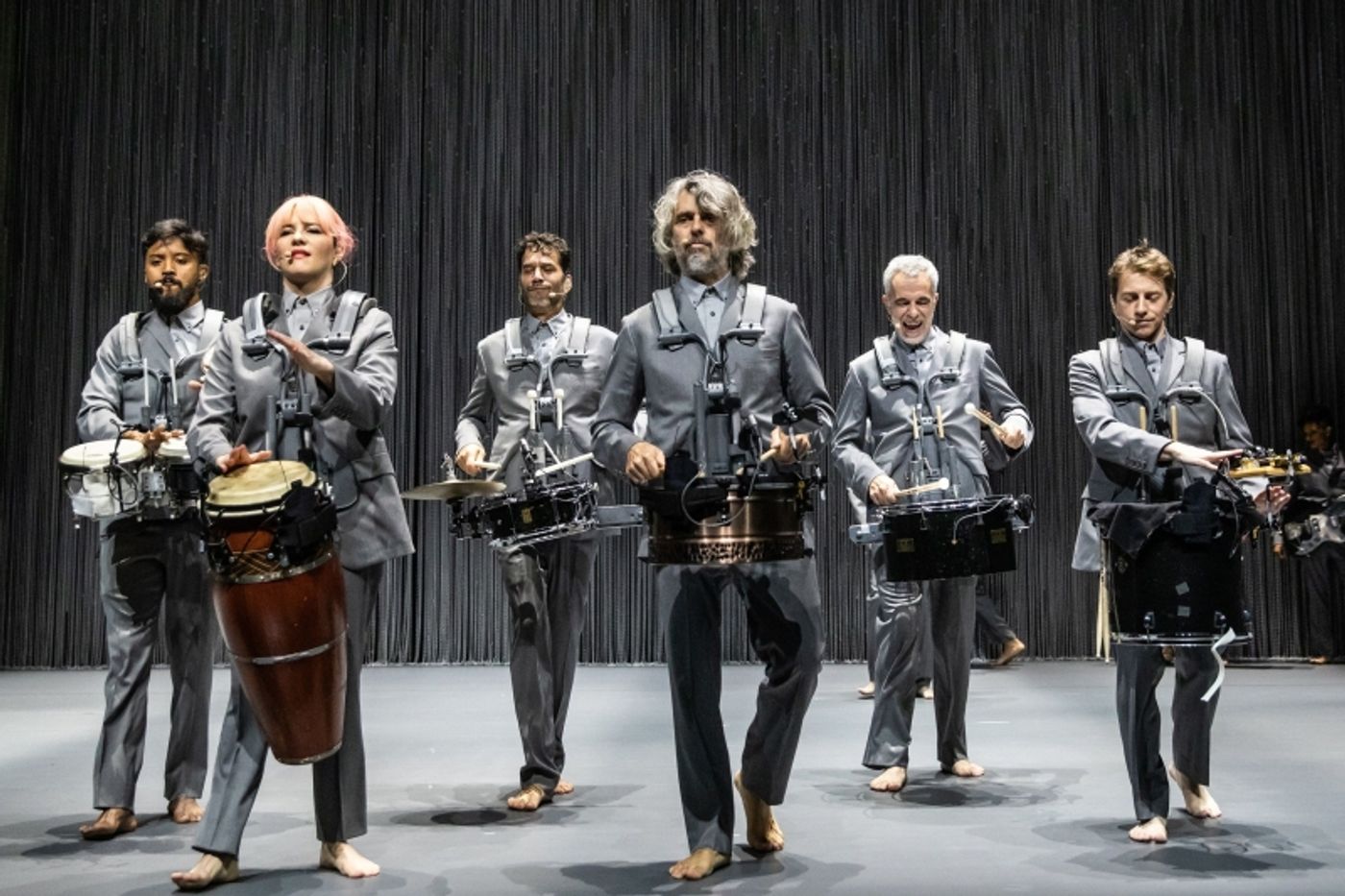
One of my favorite aspects of American Utopia was seeing how the group of percussionists on stage formed a complete unit, acting as one "drum set" with a variety of different instruments. Jacquelene Acevedo, Gustavo Di Dalva, Daniel Freedman, Tim Keiper, Mauro Refosco, and Stéphane San Juan form a fantastic team that keeps the beat throughout the show. As someone who played percussion from elementary school until high school, being able to watch this team of percussionists come together was incredible. It was also truly wonderful to see Jacquelene Acevedo on stage, her bright and positive stage presence standing out from the stereotypical male drummer sitting at the back of the stage.
I had the opportunity to speak with members of the percussion section of American Utopia's band, where we discussed what it is like to perform on stage as part of a unit.
What were your first thoughts on playing on stage for American Utopia?
Daniel Freedman: American Utopia began as a world tour. We rehearsed for about a month and did our first show for friends and family before hitting the road. There were still so many things to concentrate on - the choreography, drum harness, switching instruments, etc. - that we probably didn't fully understand how amazing the show was. I remember my family freaking out and saying the show was innovative, epic, and emotional.
Mauro Refosco: Back in 2018 when we first performed the show, I think my mind was on overload to remember so many things going on. Between the music, playing the instrument, singing, and dancing, it took a little bit of time to have it all coordinated. Once that was out of the way, the joy was immeasurable, and it is still to this day.
Gustavo Di Dalva: For me, it was like revisiting my musical beginnings where I played, danced, and sang. This show feels a lot to that to me.
Stéphane San Juan: I was called to join the tour in Oxford, England 24 hours before my first show, and I received a video of the show and studied it on the plane. Then, I realized that everything was so different than what I usually do as a drummer/percussionist and started doubting my ability to jump into this but I had already accepted the invitation. Once performing on stage, I thought, "I feel I can do this, it's like every experience I had before prepared me for this crucial moment."
Jacquelene Acevedo: Yes. That was my thought, haha! When I got the call to audition everything in me said "YES, I want to do this." I've learned to look for this response in my person for any project I'm considering.
Tim Keiper: My first performance with American Utopia was at the Count Basie Theater in my hometown Red Bank, NJ. Back then there were many challenges - building the instruments, figuring out how to play them, and then simultaneously performing the music and choreography. While my focus was mainly on those things, it was already abundantly clear that we were doing something totally different and that there was a special connection between this group of musicians.
What is it like performing with a group of percussionists on stage?
Daniel Freedman: All of the percussionists in American Utopia have played extensively with other drummers and percussionists and it's very comfortable and super fun.
Mauro Refosco: It's pretty amazing. First, we are very good friends and happy to be around each other. Then there is the admiration of each other's crafts, so playing together just makes it all the more special.
Gustavo Di Dalva: It is the best feeling for those of us who work in rhythm, and with this group of percussionists it is even better.
Stéphane San Juan: It's a dream come true. Every drum partner is an idol. It reminds me of my time in West Africa and my years in Brazil doing the Rio carnival with my beloved Samba school Império Serrano where we performed with 300 drummers.
Jacquelene Acevedo: It's very familiar, I grew up playing with percussionists. My Dad is a drummer & percussionist. He would visit my school for show-and-tell and do full-on percussion workshops! Also we would just play a lot in the house with all kinds of musicians who visited and even people who weren't percussionists: Gonzalo Rubalcaba, Dave Valentin, El Negro, Changuito.
Tim Keiper: Nothing beats playing music with your friends. And this happens to be 6 drummers - WOW! This is really one of those rare and remarkable situations and I feel very blessed to have had this experience. Everyone comes from a unique and different background but we all know how to speak the same drumming language. It's a conversation that changes each night as everyone is listening and interacting - call and response, filling in the rhythmic gaps, and leaving space for others to express themselves. Even though we are playing the same show every night, we are always working to improve what we do - whether adding new variations or becoming tighter and more cohesive as a unit. It's a constant evolution and it's insanely fun.
Do you have a favorite song to perform?
Daniel Freedman: All of David's music is incredible. I may have a few favorites but I'm not telling. Ha!
Mauro Refosco: Don't have one in particular, but I'm in general very proud of what we have achieved as an ensemble.
Gustavo Di Dalva: My favorite song is This Must Be the Place (Naïve Melody).
Stéphane San Juan: Not really, I feel this show as one piece made of different sketches and I enjoy performing every single bit of it.
Jacquelene Acevedo: It always changes but right this second it's "Toe Jam."
Tim Keiper: It's a blast getting to play so many different instruments in the show. It makes each song unique and keeps things fresh night to night. I don't necessarily have a favorite song or instrument but "Born Under Punches" is the most challenging. I come out with a percussion tray covered in sound effects, metal bells, and caxixi (basket-woven shakers) draped around my neck, and I play all of them throughout the song. Many things can go wrong: instruments breaking or falling to the ground or operator error (that's me!) so this song can be the most exciting when things go right (or wrong!).
What was the process of directing the music in American Utopia like?
Mauro Refosco: Once David told me that we were going to be six drummers in the show and I had put together the personnel, I started listening to the list of songs and breaking down how to achieve that given the fact that we would be carrying the instruments and doing some choreography. Once I had a sketch of what each of us were playing, I set up meetings with each player to listen to the music and hear their thoughts on how we could do it, so in a way it was a collective effort to create what became the basics of the drum section. With rehearsals and a few shows under our belts, we were able to take a step forward, and up to this day, just a few weeks shy of the show closing, we keep adding and experimenting with ideas on how to make it sound better. It's very alive!!!
How does performing on Broadway compare to performing for festivals?
Gustavo Di Dalva: On Broadway we have our own cozy space that we make our second home, that we take care of. It feels like meeting our audience in our living room.
Do you find your performance style changing when you're performing in-person versus for a recording?
Jacquelene Acevedo: I suppose a little bit... there's a spontaneity that I always bring to my performances, and I think that makes everything better for both fellow musicians and audiences -and for me too. I can surprise myself! That spontaneity maybe fits more naturally with a live performance than a recorded one, which requires a little more predictability.
How do you balance being both a music director and a percussionist throughout the performance?
Mauro Refosco: I guess my brain stays divided between the task of playing the parts that I'm assigned to and having my ears open to what else is going on with the band. Bass lines, guitar grooves, David Byrne's phrasings, lyrics and such. Also, I see myself as someone that instigates the other members of the band to try things and be bold.
You've been involved with films, theatre productions, tours, and other types of performances. Do you have a favorite type of performance to play at?
Tim Keiper: It's a blast getting to play so many different instruments in the show. It makes each song unique and keeps things fresh night to night. I don't necessarily have a favorite song or instrument but "Born Under Punches" is the most challenging. I come out with a percussion tray covered in sound effects, metal bells, and caxixi (basket-woven shakers) draped around my neck, and I play all of them throughout the song. Many things can go wrong: instruments breaking or falling to the ground or operator error (that's me!) so this song can be the most exciting when things go right (or wrong!).
What has it been like performing and studying music around the world?
Stéphane San Juan: Another dream come true, I'm a very curious person and love to learn new things. I couldn't afford to study in a music school so as a self-taught musician I started working and got experience with many artists from different regions of the globe. That showed me my capabilities as well as my limitations so I decided to study music in the countries that were the most significant to me musically. Mali, Senegal, Morocco, South Africa, Bangladesh, Cuba and finally Brazil. By doing that I got the chance to learn from some of the best and also work with some of the best from these places. Moving to the USA is also part of the same project - my intention here is to learn from the best and work with the best.
How have you been able to balance being both a percussionist and dancer on stage?
Jacquelene Acevedo: The balance of being a dancer and percussionist requires me to be vigilant behind the scenes by stretching and warming up both my hands and body plus a lot of body maintenance: exercise, massage, and good nutrition.
How has American Utopia evolved since the album was released?
Mauro Refosco: I believe the evolution has been in so many different ways, not just musically, but as human beings. Like David says now in the show, I believe I have changed and see the world in a different way. I believe that statement speaks to all of us.
How has American Utopia changed your view of music?
Stéphane San Juan: It hasn't exactly changed my view of music but definitely changed my view on shows, on how to present music to the audience. Somehow David Byrne's American Utopia is at the same time a concert, a play, a ballet, a movie, a party, and more. Working with David and the whole cast on this show has taught me a lot and revolutionized my idea of what a show is. I am extremely grateful for this fabulous experience.
Beyond American Utopia
Over the past few months, I have become engrossed in the world of David Byrne, listening to his music and checking out his different projects. A few weeks ago, I went to his art exhibit at the Pace Gallery, an exhibition of drawings relating to the title of the exhibition, "How I Learned About Non-Rational Logic." Through Byrne's drawings I was able to see the deeper meaning of some of the songs from American Utopia, connecting the dots between lyrics, movements, and music that I had not seen before. I've found myself trying to learn the dance moves, watching the American Utopia film at half speed over and over to get the most difficult movements right. The show has been a journey of growth for me in ways that I never could have imagined when I first went to see it back in November.
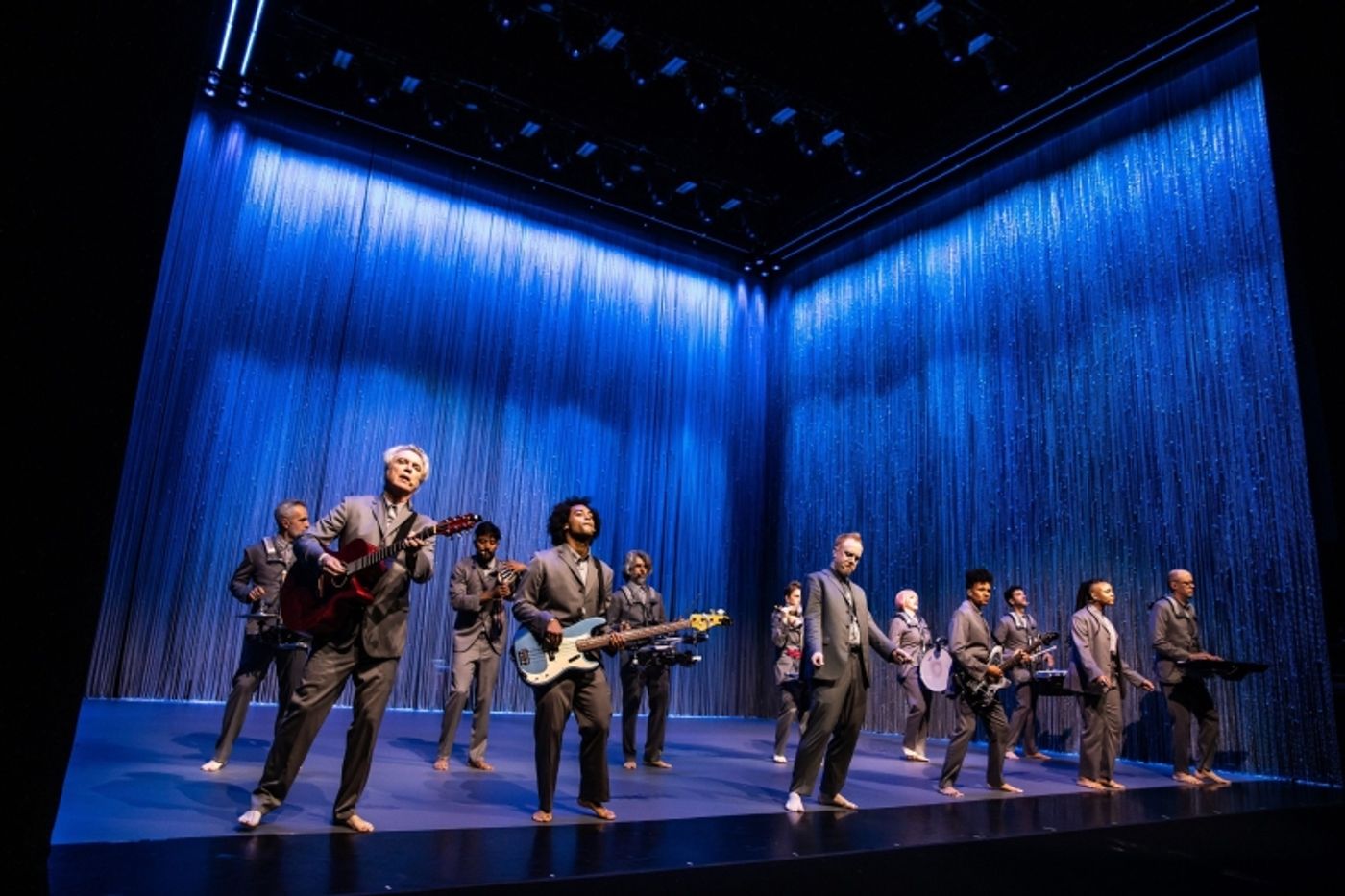
Ultimately, David Bryne's American Utopia is one of the greatest stage performances that I have ever seen, a show that has inspired thousands of people around the world. Once you've seen the show a few times, it's truly a delight to watch the different performers and see how each of them interpret the same moment in different ways. David Byrne has truly given them a "utopia" where they are able to wander around the stage as they please, creating a group of free yet unified performers that has never been seen on stage before.
American Utopia is running through April 3rd, 2022, at the St. James Theatre. You can get tickets here or enter the lottery on SeatGeek. Don't miss out on this spectacular production!
A special thank you to Jacquelene Acevado, Gustavo Di Dalva, Daniel Freedman, Tim Keiper, Mauro Refosco, and Stéphane San Juan for their contributions!
Videos


